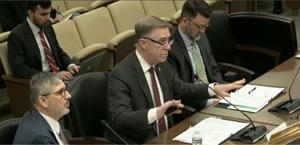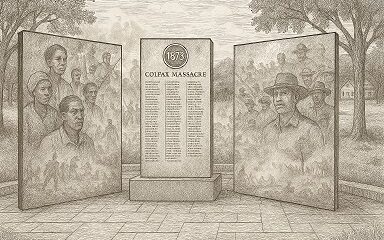The United States has the most dynamic economy in the world. Where it once was symbolized by the automotive and steel industries, the American economy is now the world’s technology colossus. But the U.S. economy is more than that. It is a unique sum of the parts of 50 states whose identities are often tied to a particular job or industry. (And domestic workers hold the most jobs in these 12 states.)
Using data on employment by state for all detailed occupations from the Bureau of Labor Statistics Occupational Wage and Employment Statistics survey for May 2022, 24/7 Wall St. identified the most unique job in every state.
Based on location quotient – the ratio of the concentration of an occupation’s employment in a state relative to its concentration nationwide – upholsterers ranks as the most unique occupation in Mississippi. With 3,500 jobs in the field out of 1,131,550 jobs in the state, the occupation is 17.0 times more concentrated in Mississippi than it is nationwide.
The average annual wage for workers in the occupation across the state is $37,280, compared to $41,900 nationwide.
| State | Most unique job | Occupation’s location quotient | Occupation employment in state | Occupation’s avg. annual wage in state ($) |
|---|---|---|---|---|
| Alabama | Textile winding, twisting, and drawing out machine setters, operators, and tenders | 6.2 | 1,990 | 37,270 |
| Alaska | Zoologists and wildlife biologists | 20.7 | 740 | 81,320 |
| Arizona | Continuous mining machine operators | 6.8 | 1,880 | 51,800 |
| Arkansas | Agricultural product graders and sorters | 7.6 | 1,470 | 33,470 |
| California | Crop, nursery, and greenhouse farmworkers and laborers | 5.6 | 188,580 | 34,790 |
| Colorado | Atmospheric and space scientists | 5.7 | 1,050 | 107,220 |
| Connecticut | Methal and plastic lathe and turning machine tool setters, operators, and tenders | 5.4 | 1,160 | 48,140 |
| Delaware | Meat, poultry, and fish cutters and trimmers | 8.3 | 3,400 | 31,190 |
| Florida | Bridge and lock tenders | 3.6 | 820 | 32,040 |
| Georgia | Textile winding, twisting, and drawing out machine setters, operators, and tenders | 11.5 | 8,570 | 34,890 |
| Hawaii | Motorboat operators | 45.4 | 570 | 52,930 |
| Idaho | Nuclear engineers | 9.0 | 590 | 149,100 |
| Illinois | Misc. mathematical science occupations | 6.3 | 960 | 79,540 |
| Indiana | Metal-refining furnace operators and tenders | 10.6 | 4,290 | 67,860 |
| Iowa | Agricultural technicians | 9.2 | 1,250 | 49,630 |
| Kansas | Aircraft structure, surfaces, rigging, and systems assemblers | 19.2 | 5,760 | 56,560 |
| Kentucky | Metal and plastic forging machine setters, operators, and tenders | 7.3 | 1,000 | 52,490 |
| Louisiana | Sailors and marine oilers | 19.1 | 6,790 | 52,910 |
| Maine | Logging equipment operators | 7.4 | 760 | 43,240 |
| Maryland | Astronomers | 18.0 | 690 | 141,880 |
| Massachusetts | Biochemists and biophysicists | 10.5 | 8,250 | 117,830 |
| Michigan | Metal and plastic patternmakers | 9.3 | 590 | 64,050 |
| Minnesota | Misc. gambling service workers | 13.2 | 3,090 | 30,520 |
| Mississippi | Upholsterers | 17.0 | 3,500 | 37,280 |
| Missouri | Cooling and freezing equipment operators and tenders | 6.8 | 830 | 48,000 |
| Montana | Gambling and sports book writers and runners | 21.7 | 570 | 20,020 |
| Nebraska | Transportation equipment electrical and electronics installers and repairers | 8.9 | 500 | 73,550 |
| Nevada | Gambling managers | 31.8 | 1,460 | 90,350 |
| New Hampshire | Misc. metal and plastic workers | 6.5 | 610 | 40,520 |
| New Jersey | Shampooers | 7.8 | 1,620 | 29,190 |
| New Mexico | Extraction worker helpers | 17.5 | 670 | 43,760 |
| New York | Transit and railroad police | 7.0 | 1,460 | 76,290 |
| North Carolina | Textile bleaching and dyeing machine operators and tenders | 7.4 | 1,550 | 30,030 |
| North Dakota | Wellhead pumpers | 30.6 | 1,220 | 64,350 |
| Ohio | Engine and other machine assemblers | 4.2 | 7,660 | 56,370 |
| Oklahoma | Gambling surveillance officers and investigators | 14.9 | 1,700 | 31,310 |
| Oregon | Misc. personal care and service workers | 24.2 | 18,430 | 34,900 |
| Pennsylvania | Metal pourers and casters | 4.5 | 1,070 | 42,690 |
| Rhode Island | Jewelers and precious stone and metal workers | 7.5 | 640 | 45,750 |
| South Carolina | Tire builders | 15.4 | 4,120 | 52,610 |
| South Dakota | Forest and conservation workers | 34.4 | 610 | 33,250 |
| Tennessee | Statistical assistants | 12.0 | 1,690 | 51,840 |
| Texas | Oil and gas derrick operators | 7.2 | 6,930 | 51,570 |
| Utah | Continuous mining machine operators | 7.2 | 1,070 | 63,690 |
| Vermont | Misc. community and social service specialists | 5.0 | 940 | 48,080 |
| Virginia | Metal and plastic layout workers | 12.6 | 2,260 | 57,530 |
| Washington | Tapers | 7.4 | 2,420 | 75,320 |
| West Virginia | Mining roof bolters | 87.5 | 680 | 66,080 |
| Wisconsin | Foundry mold and coremakers | 5.3 | 1,150 | 43,410 |
| Wyoming | Oil and gas roustabouts | 28.5 | 2,020 | 48,120 |





















































